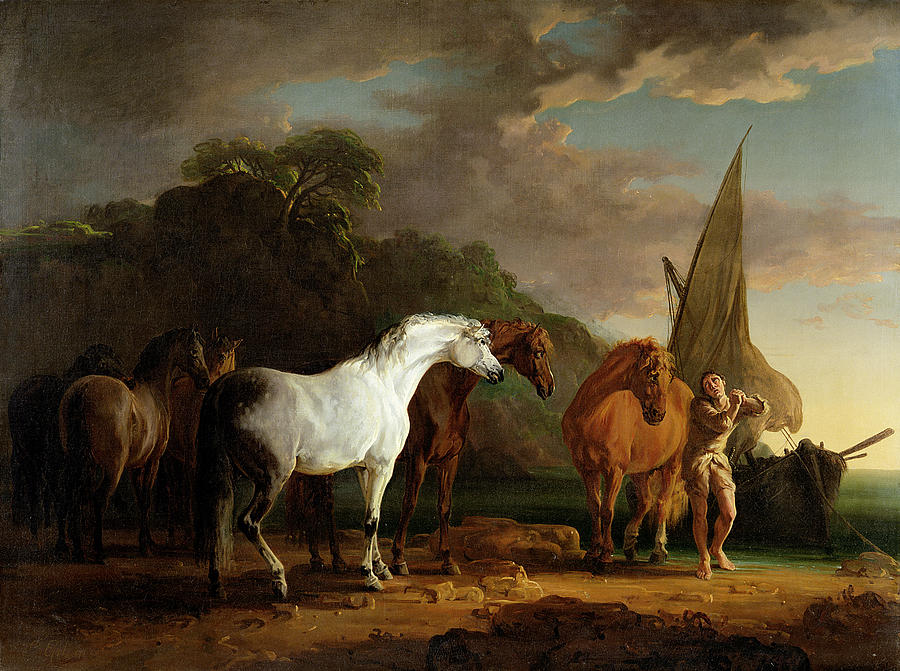
Gulliver Taking His Final Leave of the Land of the Houyhnhnms, by Sawrey Gilpin, 1769. Yale Center for British Art, Paul Mellon Collection.
• Utopia at home: “In the early history of the novel, writers from Aphra Behn to Jonathan Swift tried to bring utopia nearer, tried to bring it back home to England. This was a time of rambling adventure fiction: pseudo-true stories of merchants, pirates, captives, and castaways, all scattered to the four winds. In Gulliver’s Travels (1726), for instance, Gulliver goes to Barbados and New Holland (modern Australia) but also the Country of the Houyhnhnms, a utopian land of naturally virtuous horses. It’s at once a satire on tall tales and a very serious philosophical provocation. But Swift doesn’t stop there. Gulliver comes home and recreates Houyhnhnm society in miniature, shunning humans for the company of the horses in his stable. It is a plot pattern that recurs throughout the period, most notably in the novels of Daniel Defoe, best known as the author of Robinson Crusoe (1719).” (Public Domain Review)
• Revisiting the novels—and the legacy—of the least-read Brontë sister. (The Spectator)
• The story of the “Bobbed-Hair Bandit,” a 1920s criminal who represented everything that was wrong—and right—about the modern women of the decade. (Atlas Obscura)
• How Mr. Coffee made coffee-making a man’s job: “In a bid to get consumers to give up their familiar percolators for this expensive new product, Mr. Coffee included something unexpected in its marketing: men. Not only was it given a masculine name, writes Shrum, but its marketing suggested that it would produce a man’s preferred brew. The company hired Joe DiMaggio to give his masculine endorsement to the product—adding an additional layer of masculine advice to a product that purported to teach women how to make a better brew.” (JSTOR Daily)
• African American writers and Victorian literature: “Frederick Douglass serialized Dickens’s Bleak House in Frederick Douglass’ Paper as it was first being published in England and printed extensive commentary on the novel. Frances Ellen Watkins Harper and others turned to George Eliot’s little-known dramatic poem ‘The Spanish Gypsy’ and reworked its minoritarian nationalist rhetoric to find an analogy between the plight of the Romani people and the African-American experience. Charles Chesnutt imagined a biracial David Copperfield in The House Behind the Cedars, rewriting that bildungsroman’s famous scene of childhood reading, and Pauline Hopkins borrowed copiously from Tennyson and Bulwer-Lytton in Of One Blood. W.E.B. Du Bois paired Victorian poetry with black spirituals in more complicated epigraphical gestures than previous scholars of The Souls of Black Folk have recognized.” (The Chronicle of Higher Education)
• Are book collectors just hoarders? A historical investigation. (The Guardian)